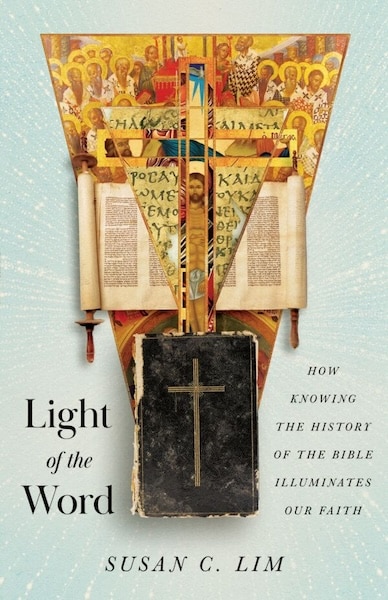Love
Loving the Word of God is a great pursuit, but it’s not always easy. Like most love relationships, there are inevitable highs and lows. And as teachers of the Bible, many of us walk a delicate balance between scouring and savoring the Scriptures. We carefully search through passages to teach God’s truths, but sometimes the work supersedes the love.
A few months ago I was preparing for a sermon, and a feeling of dread came over me. I read Colossians a few times, but I had no clue how to teach on the Colossian heresy or the centrality of Christ. I’ve taught on both before, but somehow what I had seemed dry and hackneyed. And instead of opening the Word again and quieting my heart to hear his voice, I felt the need to find an “angle.” Being stuck on a sermon prep can sometimes make the Bible seem like a resource to be mined rather than an opportunity to hear God speak.
These moments make me realize that I can’t give what I don’t have. Just like when our cars run out of gas, we need a refueling in order to continue. Running on fumes can last for only so long, and we can’t teach or lead others well when we’re empty ourselves. Thankfully God’s plans include frequent pitstops for us to take in a fresh supply of love and grace. His mercies are new every morning, and his love is penned for us in the Scriptures so that we might partake as often as needed.
Canon
One way of falling more deeply in love with the Scriptures is to know how God put it together. Like getting back-stage passes or a behind-the-scenes look, knowing the canon of the Bible bolsters our faith in the Scriptures and in God himself.
Out of the many features to gaze at, let’s see why only the 39 books of the Old Testament and 27 books of the New Testament have been canonized as God’s Word. When we consider the thousands of other books that have contended for canonical status, the selection of these 66 books can seem arbitrary. But even a cursory look at the process of canonization reveals the opposite. The extremely stringent and meticulous process in deciphering what constitutes divine revelation should give students of the Bible ever greater confidence in the Word. Many criteria uphold the canon, but here we’ll consider just a few: location, authorship, and time.
The Old Testament was written starting in the Middle and Late Bronze ages until about 450 BC. During this period, only writings that were deemed inspired by God were placed in the temple. God’s Word was initially instructed to be placed in the Ark of the Covenant (The Ten Commandments, Deuteronomy 10:2) and also near it (the Law, Deuteronomy 31:24-26); and later the divine writings that are included in our Old Testament were housed in the Temple that Solomon had built (2 Kings 22:8). At no time has a single apocryphal book been placed in any of these sacred places.

The Israelites who had seen the parting of the sea and eaten the manna from heaven were the initial eyewitnesses to what God did and what God said. And later generations continued to uphold the Masoretic Text (common version of today’s Hebrew Bible) as divine. Although the Masoretic Text has a different categorization and ordering than the Protestant Old Testament, the content is the same. This is the veritable tradition that Protestants have likewise upheld as God’s Word.
The New Testament was written between AD 45 (at the earliest) to about AD 100, and every book was penned by an apostle or an apostolic associate. Initially written on 27 separate scrolls and later stitched together into codices (or books), each of these writings were composed during the apostolic period. Even great works, such as the Didache (or “Teaching) and 1 Clement (Clement of Rome’s letter to Corinthian Christians), were considered spiritually useful but not divine in origin.
Just like those who traveled by pillars of clouds and fire, the apostles themselves were eyewitnesses. They walked with Jesus on this earth, and God used them to pen divine words that comprise our New Testament. No other book has passed the stringent criteria used to canonize the New Testament, including authorship, time of composition, and orthodoxy.
Back to Love
Like watching a backstory, understanding the piecing together of Scripture helps us to better understand the Bible itself and God’s sovereignty over it. He went to great lengths to share his love through human words so that we might know and love Him back.
John 1:1 reminds us that “In the beginning was the Word, and the Word was with God, and the Word was God.” If we seek love, we must seek God. And if we seek God, we must seek the Scriptures. God tells us this in prose, poetry, and parables how much he loves us. And knowing how these words were stitched together only heightens and deepens our love for the Lord, so that we can love him and those around us to the fullest.
By the way, after feeling stuck on my sermon prep for Colossians, I sat in prayer for a bit and reread the book. Then I considered how Paul penned this book along with the other prison epistles while bound in a Roman prison. Thinking about the date of composition for these books, along with Acts, in the AD 60s under Nero’s reign made me appreciate God’s love even more. The urgency and emotion in Paul’s words – God’s Word – became more palpable, and teachings about heresies and the “mystery” of Christ became less theoretical and more personal. Context can be crucial in delivering God’s Word, and canonicity provides just that.


Susan C. Lim is a historian and writer. She has been a professor of history at Biola University in La Mirada, California, and is a speaker at conferences, churches, and retreats. She loves to share God’s Word and serve at her home church, Mariners Church in Irvine, California. She is the author of Light of the Word: How Knowing the History of the Bible Illuminates our Faith.
Light of the Word: How Knowing the History of the Bible Illuminates Our Faith
by Susan C. Lim
Is Scripture trustworthy? How did we come to have just these 66 books?
Historian Susan C. Lim explores the history of the Bible, arguing that it should bolster our faith and anchor us through the changing tides of time. She explains how Christians came to accept certain documents as inspired and not others, and how the books we now call the Bible came to be assembled and canonized as authoritative. The same Spirit of God who oversaw the writing of Scripture continues to be at work actively in us in our receiving and reading of it, to grow us in faith and maturity.
As a bonus, if you purchase one of the books above, you help support The Pastor’s Workshop at no extra cost to you. As an Amazon affiliate, TPW receives a small comission from purchases through these links.
Don’t Miss
The Latest From Our Blog
New Site Launches Tomorrow!
Watch this Space! Tomorrow (May 29) is the official launch of the new The Pastor's Workshop site! Return to this blog tomorrow morning for a post highlighting the new features and explaining how subscribers can get on and start using the site! Here are some new...
How You Can Prep for Pentecost
This was originally posted on May 12, 2016 on https://huffpost.com Pentecost Came Like Wildfire I'm lying on an ice pack early this morning, doing my back exercises and listening to Pray as You Go, a tool for meditation, with monastery bells, music, and a Bible...
Sacred Spaces: the Church Forests of Ethiopia
Let's Go to Ethiopia! Here’s a fun exercise with a spiritual payoff. Go to Google Maps and view aerial images of the South Gondar zone of Ethiopia. Use this button:When the page loads, you'll see a light brown countryside, mostly farmland. There are thin lines of dark...





